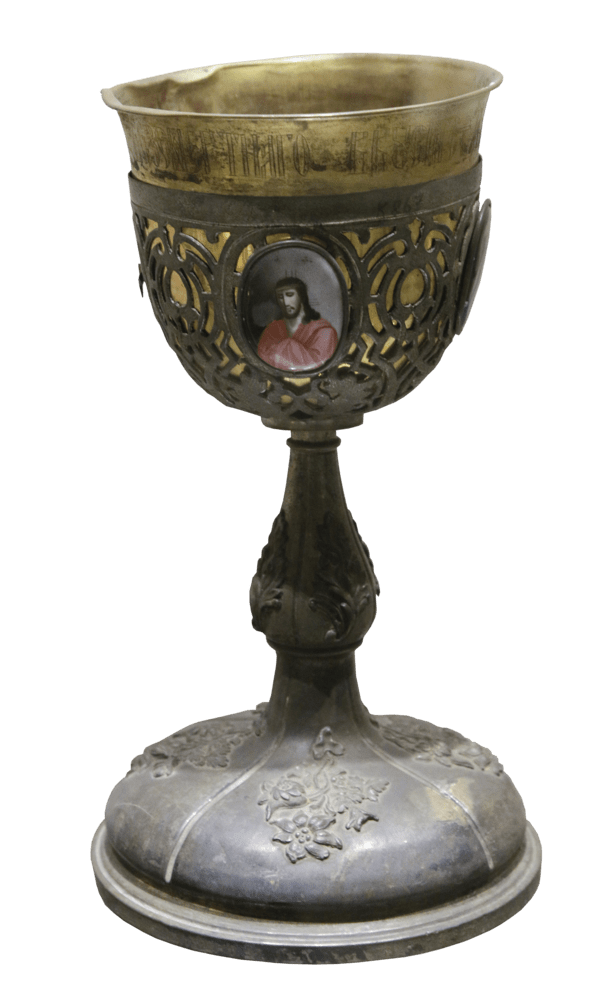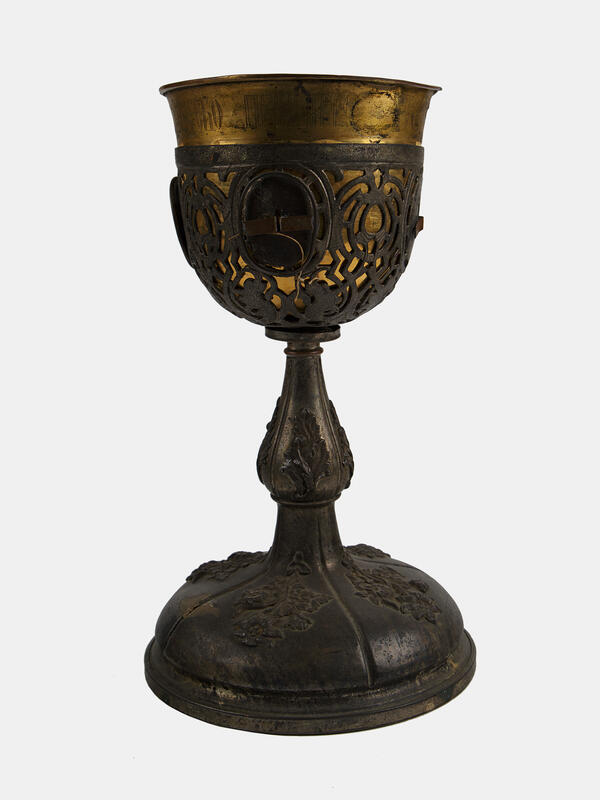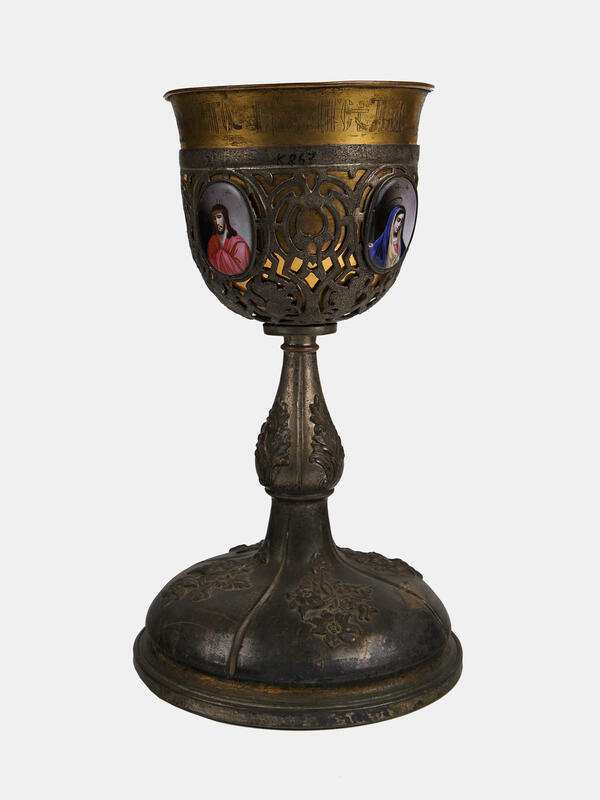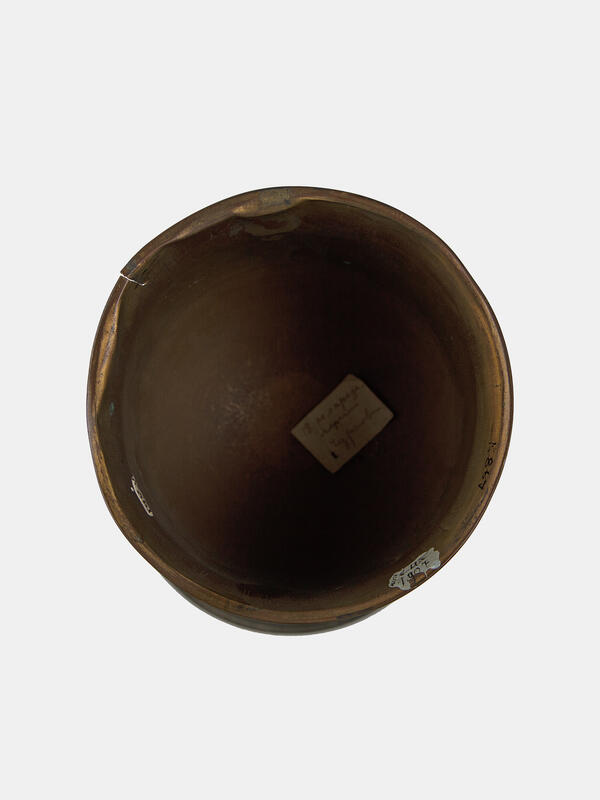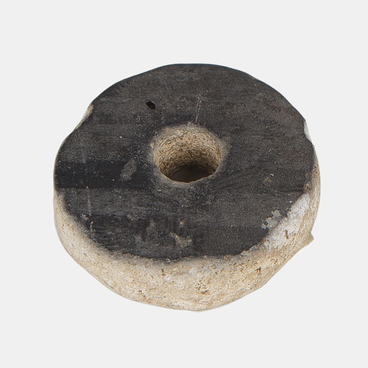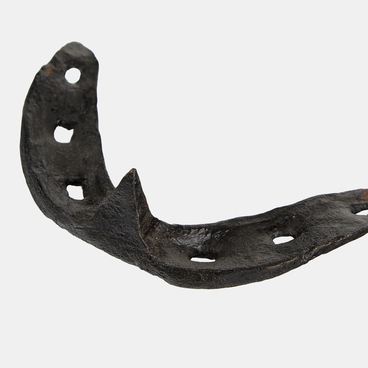A chalice is a sacred church utensil. Its name is translated from ancient Greek as “cup”. This is a vessel in the form of a deep footed bowl with a wide base. It is used in Christian worship to celebrate the Sacrament of Holy Communion and filled with wine — the Blood of Christ.
The chalice symbolizes the first cup, which, according to the Gospel of Matthew, Jesus gave to his disciples during the Last Supper with the words: “Drink from it, all of you. This is my blood of the covenant, which is poured out for many for the forgiveness of sins.” The meaning of the chalice in Christianity is complex: it also symbolizes the Virgin Mary, the mother of the Savior.
The first chalices were made of wood, then of glass, and later of precious metals. Church rules prohibited making liturgical vessels, including the chalice, from less-lasting, fragile materials, as well as from copper alloys susceptible to corrosion. Chalices were forged from silver and gold, carved from rock crystal, jasper, and onyx. They were decorated with precious stones, embossing, multi-color enamel, and niello.
The most common patterns featured a grapevine, personifying Christ, as well as flowers and lush grass, symbolizing the Garden of Eden. Antique chalices are true works of decorative and applied art. In the history hall of the Tula Kremlin Museum there are two richly decorated 18th-century chalices.
Poor Russian churches had wooden chalices coated with red lead and varnish. They were decorated with picturesque images, sometimes with thin silver plates. Today, chalices are made of gilded silver; liturgical inscriptions can be engraved along the edge of the smoothly polished cup, with images of the Deesis and the Calvary Cross below.
The chalice cups are sometimes covered with special nets. At the end of the 18th century, Russian artisans made lids for chalices using the Rostov painted enamel technique for decoration. In Byzantium and pre-Mongol Rus, Eucharistic chalices had a low base with two handles on the sides — this type includes the craters from the St. Sophia Cathedral in Novgorod. The chalice should be kept in the altar on the altar table or in a special safe for liturgical vessels.

